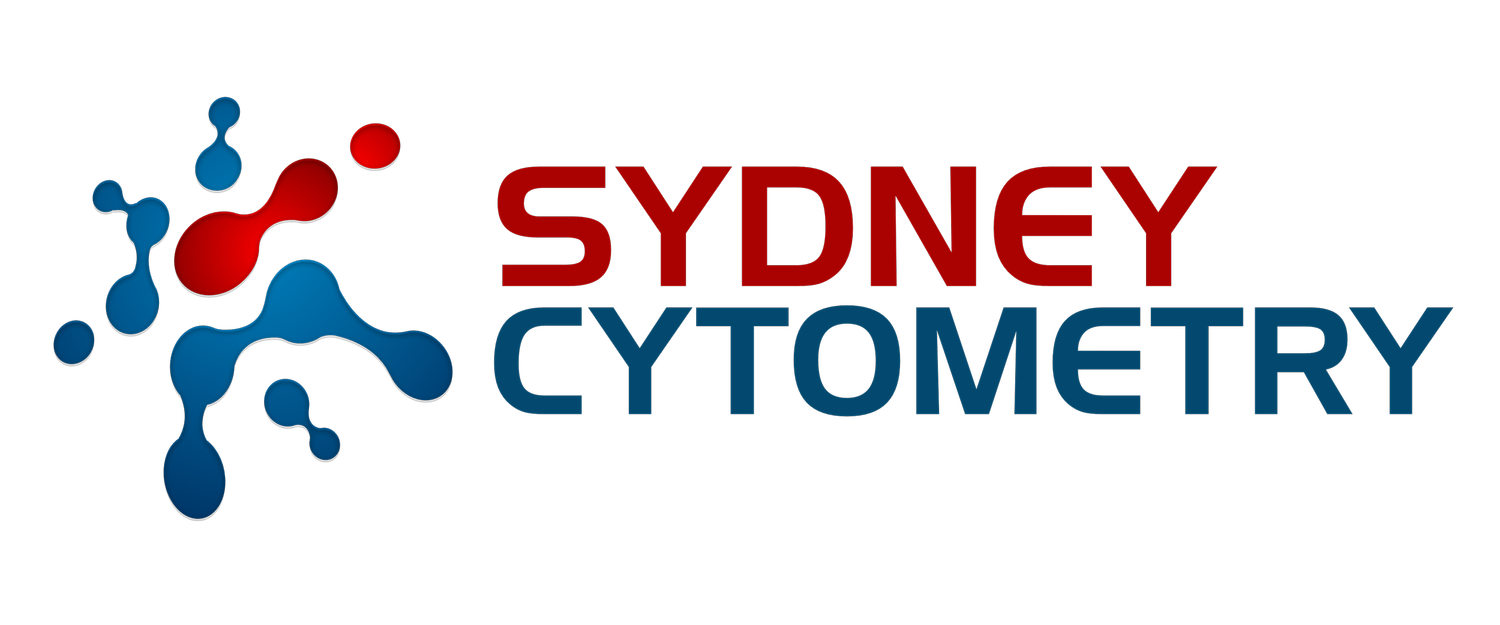
Mass Cytometry
What is Mass Cytometry?
Put simply, mass cytometry replaces the fluorescent reporters used in fluorescence flow cytometry, with metal isotopes, which are detected using cytometry by time-of-flight mass spectrometry (CyTOF). This has expanded the number of parameters that can be detected simultaneously on single cells to approximately 40 (with >100 theoretically achievable), due to the absence of signal overlap between metal isotopes. This allows an investigator to measure an enormous number of extracellular and intracellular targets simultaneously.
How it works:
The 'mass cytometry' methodology relies on the distinct atomic masses of individual metal isotypes, which are conjugated to antibodies specific for surface or intracellular antigens on single cells. Labelled cells are introduced into the machine by generating a liquid aerosol through a nebulizer, which passes sample through an argon-fuelled inductively-coupled plasma (ICP) torch, burning at approximately 7500 K. The ensuing ion cloud is then drawn into a vacuum, where ions of less than atomic mass 80 are removed from the samples, before the samples enter the time-of-flight chamber. This form of mass spectrometry ensures that metal ions with different atomic masses will arrive at the detector at different times, separated by the flight time required to pass through the chamber. Ions with larger atomic mass take longer to arrive than those of lower atomic mass. The resulting data is high-dimensional single-cell data, consisting of clean and distinct metal abundance peaks that correlate with cellular antigen expression.
Mass Cytometry - Instruments
-

Helios
Overview: The Helios is a suspension mass cytometry instrument. This involves staining samples in solution with a cocktail of metal-conjugated antibodies and acquiring them in a solution format (similar to flow cytometry).
Sample acquisition of 400 events/second
Capabilities:
- Run panels of over 40 parameters
- Minimal reporter overlap and low autofluorescence -

Hyperion
The Hyperion (imaging mass cytometer, IMC) consists of a CyTOF (Helios) instrument, with an imaging module attached to the front. Within the imaging module, a pulsed laser scans and ablates the tissue section in incremental 1 um shots. With each laser shot, vaporised material is carried into the mass cytometer, and the metal ions are analysed by time-of-flight mass spectrometry.
Sample acquisition of 0.75 mm^2 per hour
Capabilities:
- Image tissue sections
- Run panels of over 40 parameters
- Gain full microenvironment and tissue architecture data
- Minimal reporter overlap and low autofluorescence

